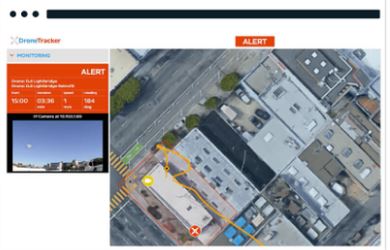Dedrone (https://www.dedrone.com/press/dedrone-introduces-drone-detection-in-the-cloud) has announced the release of Dedrone Cloud which “streamlines and accelerates drone detection technology installations, without requiring on-site IT infrastructure or maintenance.”
“Customers who need airspace security shouldn’t have to hassle with maintaining servers to store,” said Joerg Lamprecht, CEO and co-founder of Dedrone. “Dedrone Cloud provides the simplest and most cost-effective path for our customers to install an airspace security technology solution, identify and track unauthorized drones, collect data, and protect their infrastructure.”
According to a company press release additional highlights of Dedrone Cloud include:
- Accelerates technology deployment: Dedrone Cloud enables easier deployment of the Dedrone system and thus makes it quicker for customers perform a threat analysis of their airspace
- Removes the need for on-site infrastructure: Dedrone Cloud does not require additional IT infrastructure, helping security teams avoid additional costs for hardware, and time spent for installation
- Eliminates manual updates and maintenance: Communication between DroneTracker Software and RF sensor is configured automatically, and all new feature updates are automatically integrated into a customer’s DroneTracker software
- Ensures data is reliable, accessible and secure: With a 99.9% uptime rate, Dedrone Cloud enables security providers to have the latest information on their airspace activity
“Dedrone provides us a well-founded analysis of our airspace threats, which is a prerequisite for the development of an effective security system for the protection against drones,” explains David Ziegler, Security Manager at Noris Network AG. “Thanks to the Dedrone Cloud, we are now able to put drone detection technology almost everywhere, without any major financial and personnel costs.”
Dedrone’s software is a machine learning network using information from a proprietary database, DroneDNA. DroneTracker gathers intelligence from various sensors, including radio frequency and Wi-Fi scanners, microphones, and cameras, DroneTracker can detect drones over a mile away from a protected site and determines the communications protocol of the drone, its flight path and the location of the pilot. Once a drone is detected, the software alerts security personnel and can be integrated to deploy a passive security measure or defeat technology.
Earlier in 2018, Dedrone released their newest radio frequency sensor, the RF-300, which finds unauthorized drones and their pilots. Combined with the broad coverage and early warning capabilities of Dedrone’s RF-100, the new RF-300 adds situational awareness so organizations can determine the nature and severity of threats from unauthorized drones. Dedrone’s RF-100 and RF-300 are both supported by Dedrone Cloud.




